Physical Address
304 North Cardinal St.
Dorchester Center, MA 02124
Physical Address
304 North Cardinal St.
Dorchester Center, MA 02124
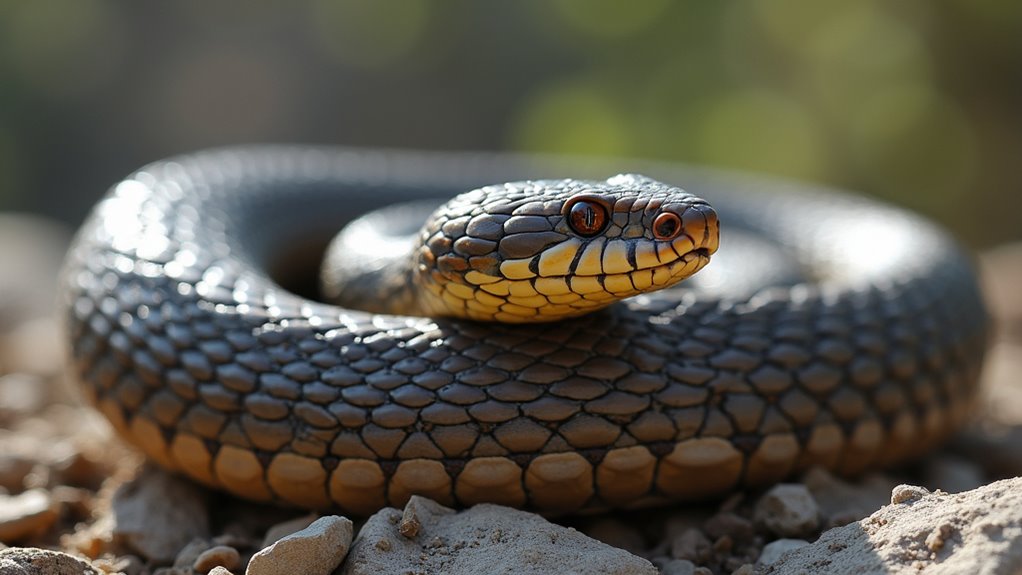
Navigating Russia's wilderness? Discover the 9 deadliest serpents lurking in forests and steppes that could strike when you least expect.
Russia’s most dangerous venomous snakes include the Common European Adder, Caucasus Viper, Mamushi Pit Viper, Blunt-Nosed Viper, and Tiger Keelback. You’ll also need to watch for the Steppe Viper and rare European Cat Snake. These reptiles have distinct markings, habitats, and venom effects ranging from mild to potentially fatal. When hiking in Russian wilderness, wear protective clothing and stay on established trails. The following guide will equip you with life-saving identification and prevention strategies.
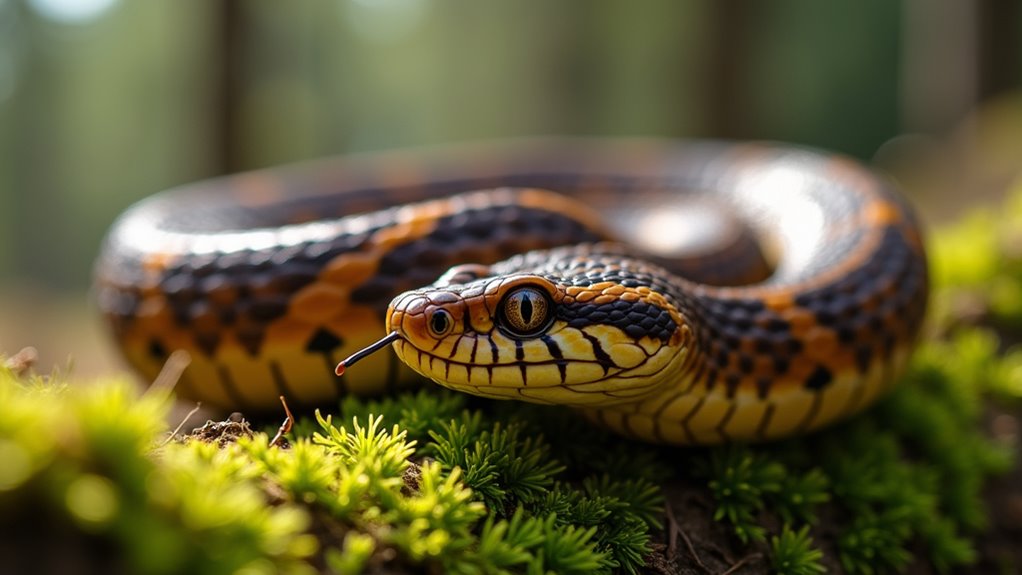
While Russia hosts several venomous snake species, the Common European Adder (Vipera berus) functions as the country’s most widespread venomous serpent. This front-fanged viper stretches across Russia from its western borders to Sakhalin Island in the east. Remarkably, it’s the only snake found north of the Arctic Circle.
Russia’s venomous landscape is dominated by the far-reaching Common European Adder, uniquely adapting to survive beyond the Arctic Circle.
You’ll recognize adders by their distinctive zigzag dorsal pattern, though melanistic (black) variants commonly appear in Alpine regions. These adders primarily use their appearance for effective camouflage when hunting prey and regulating body temperature. Typically 50-70 cm long, they deliver cytotoxic and hemotoxic venom that rarely proves fatal to healthy adults.
If bitten, you’ll experience local swelling within hours and possible systemic effects within a day.
During October-April, adders hibernate in rodent burrows, emerging to bask on rocks during brief Arctic summers.
The Common European Adder isn’t the only viper to call Russia home. The Caucasus Viper (Vipera kaznakovi) inhabits the mountainous regions of Southwestern Russia, as well as parts of Turkey and Georgia.
You’ll recognize this stout snake by its distinctive red and orange coloration with a black zigzag pattern running along its body.
Typically growing to about 1.6 feet in length, these solitary predators ambush small mammals, birds, and reptiles in their rocky habitat. The species was named in honor of Russian naturalist Kaznakov, reflecting the scientific tradition of recognizing contributors to natural history.
Though their venom is less studied than other vipers’, it’s still toxic and potentially dangerous to humans.
These snakes hibernate during winter and can live up to 15 years.
While not officially endangered, their populations face threats from habitat loss due to human development and agriculture in the Caucasus region. Unlike the warmer Norwegian destinations, the Caucasus Viper prefers the cooler mountain climates of Russia.
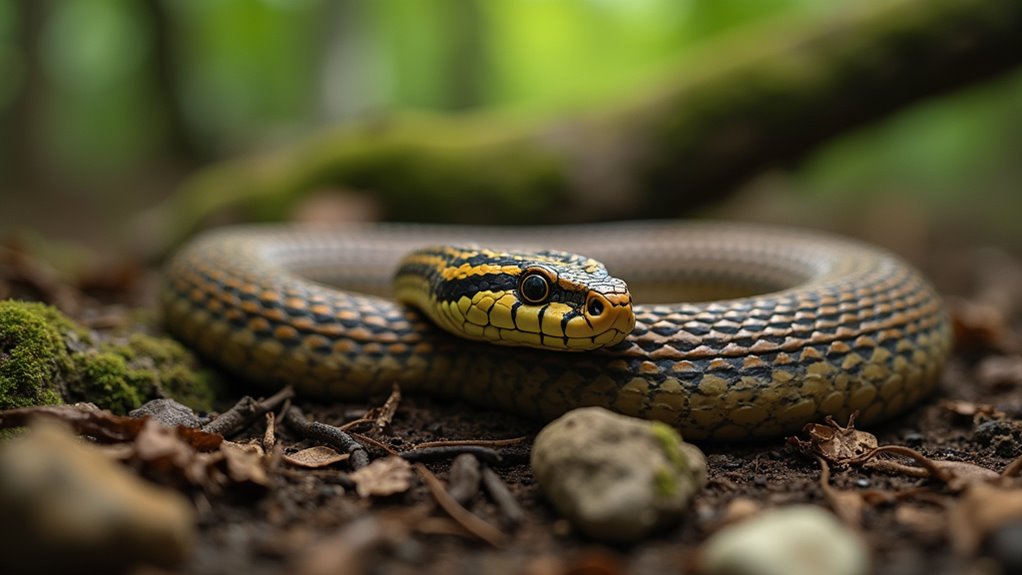
Among Russia’s deadliest serpents, the Mamushi Pit Viper (Gloydius ussuriensis) reigns as the primary venomous threat in the country’s Far Eastern territories. Also known as the Ussuri pit viper, this species lurks in forests, grasslands, and rocky areas across Far East Russia, northeastern China, and the Korean Peninsula.
You’ll recognize this viper by its distinctive heat-sensing pits, which it uses to detect prey with remarkable precision. These solitary ambush hunters primarily target small mammals, birds, and lizards, striking with venomous fangs when prey comes within range. Adults typically reach 37-64 cm in total length, with males generally smaller than females.
While not globally threatened, local populations face pressure from habitat destruction and human persecution. If you’re exploring Russia’s Far East, exercise caution in forested and rocky areas where these deadly ambush predators make their home. Unlike the serene luxury destinations of Europe, the Russian Far East demands vigilance from travelers venturing into snake territory.
Known for its deadly hemotoxic venom, the Blunt-Nosed Viper (Macrovipera lebetina) inhabits the rugged terrain of Russian Caucasia and neighboring countries in the Caucasus region. This dangerous serpent specializes in disrupting blood clotting, causing severe hemorrhaging and potential organ failure without proper treatment.
These vipers thrive in rocky, semi-arid environments where they’ve adapted to extreme temperature fluctuations:
This impressive snake is also known as the Levantine adder in many parts of its range. Unlike the vibrant nightlife spots of Cyprus, encountering these vipers in the wild can be a dangerous experience. Currently endangered due to habitat destruction and persecution, these blood-clotting specialists face significant threats from agricultural expansion and illegal collection for traditional medicine.
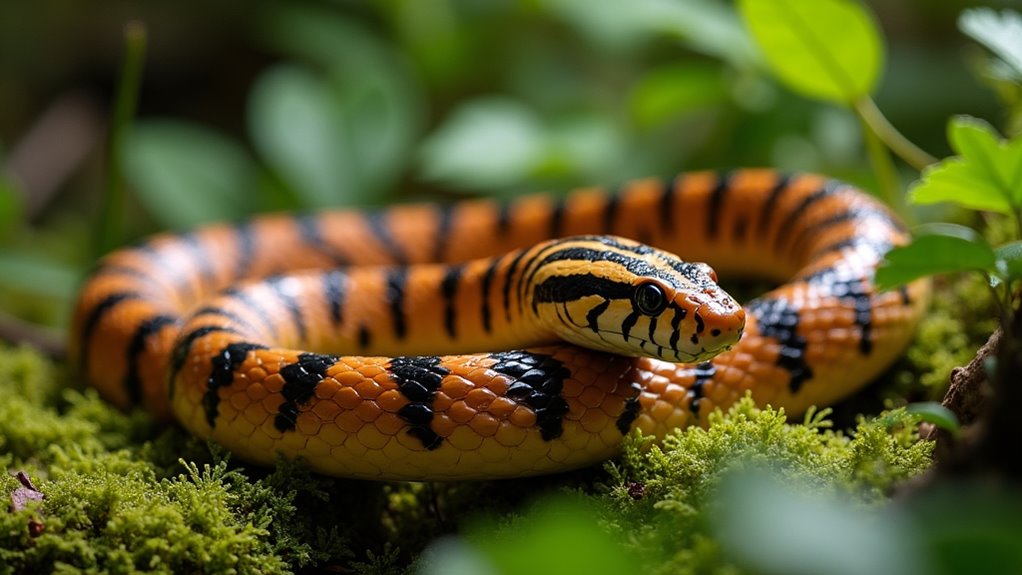
You’ll likely spot this 60-100cm reptile near water bodies, where it hunts frogs and toads during daylight hours.
When threatened, it doesn’t flee but arches its neck to display specialized nuchal glands containing toxins borrowed from its toad prey.
These defensive secretions can even aerosolize when the snake feels cornered.
While similar to practices used in bear watching destinations, this snake’s behavior is much more chemically sophisticated than a simple display.
While its rear-fanged venom poses minimal risk to humans, you should still exercise caution around this remarkable dual-defense specialist. The Tiger Keelback has a distinctive olive-drab green dorsal coloration with black and bright orange patterns that help it blend into its environment.
The steppe viper lurks throughout southwestern Russia’s grasslands, presenting a genuine threat to unwary travelers despite its modest size. This venomous species injects cytotoxins and hemotoxins when it strikes, causing painful swelling and potential tissue death that requires immediate medical attention.
You’ll find these vipers in fragmented populations across steppe ecosystems, where they’ve faced significant decline due to habitat loss and agricultural chemicals. Recent studies show the species has experienced a southward range shift in regions like Kharkiv, with most historical populations now extinct.
They’re most active during dawn and dusk in summer months, switching to daytime hunting in cooler weather. Unlike Stockholm’s vibrant nightlife scene, Russia’s grasslands become especially dangerous during evening hours when these snakes are hunting.
When exploring southern Russian grasslands:
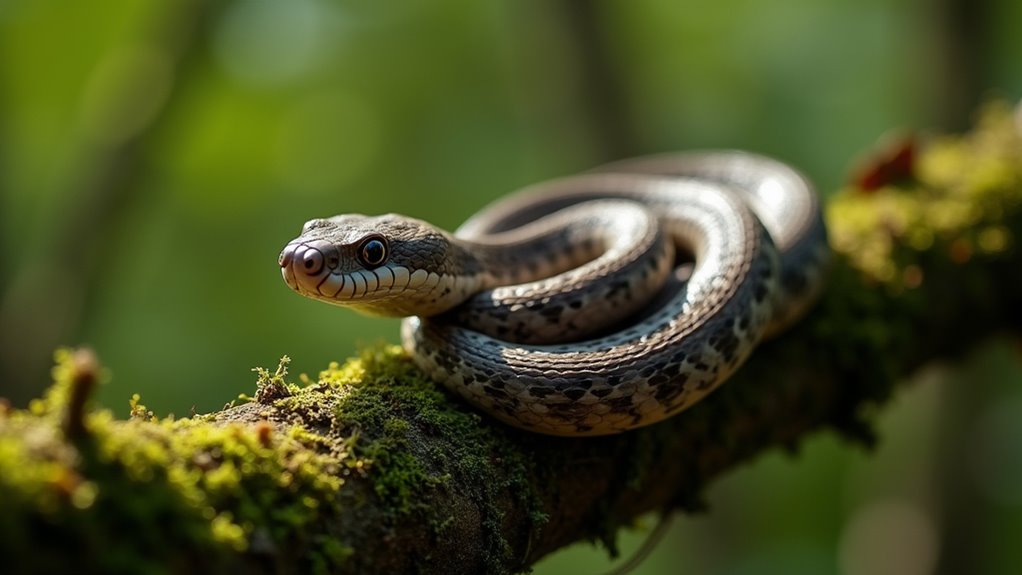
Despite its limited presence in Russia’s southwestern regions, the European cat snake remains an intriguing venomous rarity that fascinates herpetologists and wildlife enthusiasts alike.
You’ll recognize this slender reptile by its grayish-brown coloration with dark blotches and distinctive vertical pupils that aid its nighttime hunting.
Don’t worry too much if you encounter one – these rear-fanged snakes pose minimal risk to humans. Their mild venom requires prolonged chewing to deliver and typically causes only minor swelling and discomfort without serious complications.
These nocturnal hunters prefer rocky scrublands and open woodlands, often hiding in crevices during daylight hours. Their specialized hunting skills help them target and capture geckos and lizards as their primary prey.
Similar to other Finnish reptiles, this species is well-adapted to survive in cooler climates despite being relatively uncommon in northern regions.
While classified as “Least Concern” globally, local populations face threats from habitat loss. If exploring Russia’s southern borderlands, watch for this elusive species in warmer months.
When Russian snakes strike, they deliver complex biochemical weapons that can devastate the human body through multiple pathways simultaneously. The venom’s effects depend on the snake species, with vipers causing hemorrhaging while elapids trigger paralysis.
What happens when venom enters your system:
Without prompt medical attention, these effects can progress from localized swelling to systemic failure and death. In Russia, access to effective antivenom treatment is crucial but can be limited in remote regions, similar to challenges faced in other countries where snakebite is considered a neglected tropical disease. After surviving a venomous snakebite, many Russians seek coastal retreats for recovery and rehabilitation.
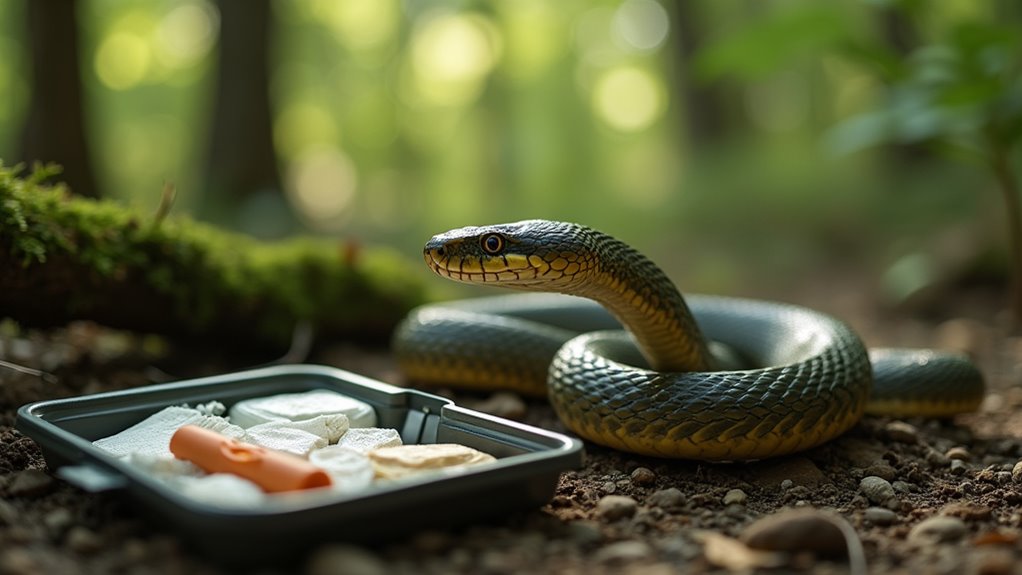
Knowing how potent snake venom can be makes prevention your first line of defense when exploring Russia’s wild areas. When hiking, stick to established trails and wear protective clothing—long pants, sturdy boots, and even gaiters in high-risk areas. Carry a walking stick to probe vegetation and always use a flashlight at dusk.
If you’re bitten, stay calm—panic increases venom circulation. Remove any jewelry or constrictive items from the affected limb, elevate it above heart level, and seek medical attention immediately. Don’t apply tourniquets or cut the wound.
Having a reliable communication method and hiking with companions dramatically improves your chances of timely treatment. While Russia has its own dangerous species, remember that Swiss wildlife also presents risks to travelers exploring mountainous regions.
Remember that antivenom is the primary treatment for envenomation, so knowing the location of medical facilities before your journey is fundamental. The WHO strategy for snakebite emphasizes community education and health system preparedness as crucial elements in reducing snakebite mortality worldwide.
Russia’s venomous snakes may lurk in mountain passes, thick forests, or open steppes—waiting with fangs poised. You’ll stay safer now with this knowledge tucked away like a field guide in your mental backpack. Remember, these serpents don’t hunt humans, they’re simply defending their territory. When you’re trekking through Russia’s wilderness, keep your eyes down, your boots tall, and your respect for these powerful creatures high.